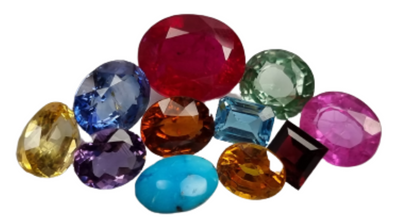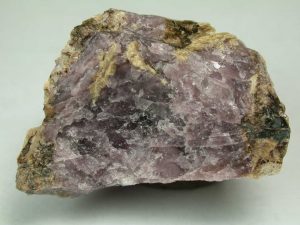Ussingite: Gemstones Information
Ussingite: A Rare and Fascinating Mineral
Ussingite is a relatively rare mineral belonging to the zeolite group. It was first discovered in 1912 and named after the Danish physiologist Hans Ussing. This mineral is primarily composed of hydrated sodium, calcium, aluminum, silicon, and oxygen, with its chemical formula typically represented as Na2AlSi3O8(OH)·2H2O.
Formation and Occurrence:
Ussingite forms in low-temperature hydrothermal environments, typically in association with alkaline igneous rocks such as nepheline syenite and carbonatite. It occurs as a secondary mineral in cavities and fractures within these rocks, often alongside other zeolites, feldspars, and minerals rich in sodium, calcium, and aluminum.
Significant occurrences of ussingite have been reported in various locations around the world, including Greenland, Russia, Canada, and the United States. However, due to its rarity and limited commercial value, ussingite is primarily of interest to mineral collectors, researchers, and enthusiasts.
Physical Characteristics:
Ussingite exhibits several physical characteristics that distinguish it from other minerals:
1. Color and Transparency: Ussingite typically appears as colorless to white, with occasional tints of pink, yellow, or green due to impurities. It is often transparent to translucent, allowing light to pass through its crystalline structure.
2. Crystal Structure: Ussingite crystallizes in the monoclinic crystal system, forming prismatic or tabular crystals with distinct cleavage planes. It can also occur in granular or fibrous aggregates, depending on the specific geological conditions of its formation.
3. Hardness and Density: Ussingite has a Mohs hardness of around 5 to 5.5, making it relatively soft compared to many other minerals. Its density typically ranges from 2.2 to 2.4 g/cm³, indicating a relatively low specific gravity.
Uses and Significance:
While ussingite is not widely used in industrial or commercial applications, it holds significance in several domains:
1. Mineral Collecting: Ussingite’s rarity and unique crystal habits make it a prized specimen among mineral collectors and enthusiasts. Collectors value well-formed ussingite crystals for their aesthetic appeal and rarity, often adding them to their collections for display and admiration.
2. Geological Research: Ussingite, along with other zeolite minerals, serves as an indicator of specific geological processes and environments. Studying the occurrence and distribution of ussingite in geological formations can provide valuable insights into the conditions under which it forms and the history of its host rocks.
3. Scientific Exploration: Ussingite’s crystal structure and chemical composition make it of interest to researchers in the fields of mineralogy, crystallography, and geochemistry. By analyzing ussingite specimens using techniques such as X-ray diffraction and electron microscopy, scientists can gain a deeper understanding of its properties and behavior at the atomic level.
Conclusion:
Ussingite may not be as well-known as some other minerals, but its rarity, unique crystal structure, and association with specific geological environments make it a fascinating subject of study for mineralogists, collectors, and researchers. As our understanding of zeolite minerals and their geological significance continues to evolve, ussingite will likely remain a valuable and intriguing component of Earth’s mineralogical diversity.





